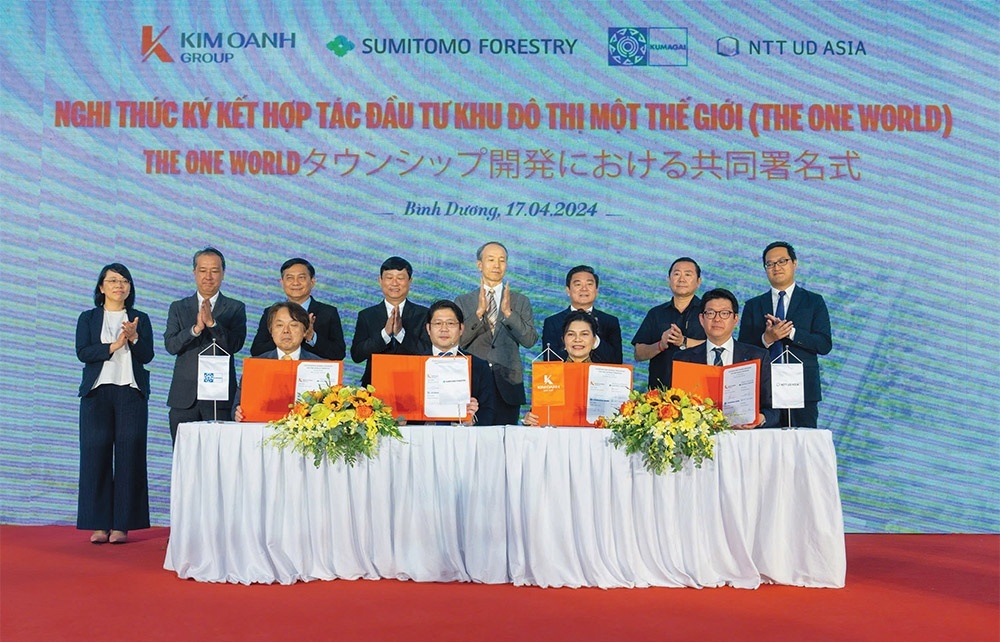Timber companies in Vietnam: seizing the opportunity
 |
| Timber companies in Vietnam: deliberate to make use of the opportunity |
Significant implications for the timber market
Starting from mid-September 2018, the US decided to impose 10 per cent tariffs with the total cost of $189 billion on Chinese goods, including wood products. The tariff will be increased to 25 per cent on January 1, 2019 and possibly reach 44 per cent if the two countries do not resolve the trade war.
According to To Xuan Phuc, senior policy analyst from Forest Trends (a non-profit organisation based in Washington, DC whose mission is to conserve forests and other ecosystems), the US-China trade war will definitely affect the Vietnamese wood processing industry.
In its report on the Vietnam-China import and export turnover of wood and timber products, Forest Trends indicated that in the first half of 2018, Vietnam’s total sawn timber exports to China were only 88,800 cubic metres (cu.m), much lower than the 178,200cu.min the same period of 2017. Regarding sawn rubber wood exports to China alone, the figure in the first six months was 2,500cu.m, equivalent to 1 per cent of the total export volume in 2017.
| Foreign partners often place orders at least six months in advance, however, due to the erratic supply and purchase price of wood, no companies dare to sign long-term contracts. |
This drop, in the view of specialists, seems to be the response of Chinese manufacturers to counterbalance difficulties in the US.
Huynh Quang Thanh, general director of Hiep Long Fine Furniture Company, said, “Via the conversation with the president of China Timber and Wood Products Distribution Association, we can see that Chinese wood processing firms are facing great difficulties in maintaining their operations due to increasing labour costs and tariffs imposed by the US. In this situation, enterprises have to build plans to replace their manufacturing facilities.”
Unable to export timber and wood products directly to the US, manufacturers in China need to figure out a solution to evade the raised tariffs, by exporting timber and wood products to Southeast Asia, including Vietnam, or to change the origin of their products and exporting them to the US subject to lower tax.
It would be acceptable if Chinese enterprises shifted to Vietnam inch by inch, gradually raising Vietnam’s timber exports. However, if they flock to Vietnam in droves and then start exporting to the US, enterprises in the US will submit a petition against Vietnam. “This will result in Vietnam being charged with a similar anti-dumping tax as China,” he added.
In line with Thanh’s warning, the US has introduced a new anti-avoidance to prevent this. If the US detect Vietnamese enterprises lending a hand to China, a 10 per cent or higher anti-avoidance tax will be imposed on timber and wood products from Vietnam. Subsequently, Vietnam’s wood manufacturing industry would face serious losses.
Setting up value chain model to make most use of the opportunity
Dien Quang Hiep, president of the Binh Duong Furniture Association (BIFA), expressed concern that the Vietnamese wood industry does not have a closed chain of processing firms and material suppliers, as raw materials account for 45 per cent of the product price.
“The lack of connection between material suppliers and manufacturers reduces opportunities to export timber and wood to the US,” he added.
Hoang Ich Tuan, purchasing director of Tekcom Corporation, emphasised that despite the towering purchasing prices, the company still does not have a stable supply of raw materials.
“Foreign partners often place orders at least six months in advance, however, due to the erratic supply and purchase price of wood, no companies dare to sign long-term contracts,” he said.
He also explained that the reason why wood suppliers seem unwilling to deal with domestic manufacturers is probably that wood exporters benefit not only from the export revenue but also from tax reductions.
To support timber processing firms to export to the US, Tuan suggested several solutions, namely conducting investigations into the prices of wood exporters to discover commercial fraud or setting the minimum export price equal to the domestic purchasing price. In the long term, related bodies should increase the export tax of raw material or ban exporting raw wood.
To ensure wood export supply, Tran Minh, head of Industry Department of Vietnam Rubber Group (the unit contributing 90 per cent of the rubber wood supply) says the group is planning to supply customised sawn timber instead of wood logs to ensure quality. He also wishes that wood manufacturers could acquire 5-10 per cent in suppliers to create a solid value chain for sustainable growth of the Vietnamese wood industry.
What the stars mean:
★ Poor ★ ★ Promising ★★★ Good ★★★★ Very good ★★★★★ Exceptional
Related Contents
Latest News
More News
- Trump's trade policies could shape Vietnam's economic outlook: Dragon Capital (November 15, 2024 | 16:56)
- Prioritising corporate governance for Vietnam’s sustainable growth (November 14, 2024 | 16:50)
- Vietnam eyes nuclear revival to bolster energy security (November 14, 2024 | 16:46)
- German businesses explore investments in Dong Nai (November 08, 2024 | 18:02)
- Vietnamese consumer sentiment outperforms regional averages (November 08, 2024 | 18:00)
- Exchange and interest rates forecast to remain stable after US election (November 07, 2024 | 14:04)
- Industrial real estate stocks benefit from US election results (November 07, 2024 | 13:56)
- 2024 sees $1.41 billion in fintech funding so far (November 07, 2024 | 08:13)
- Trump at 266 electoral votes, Harris at 195: US media (November 06, 2024 | 14:30)
- Hanoi targets digital and high-tech investment with upcoming event (November 06, 2024 | 13:28)




 Tag:
Tag:




















 Mobile Version
Mobile Version